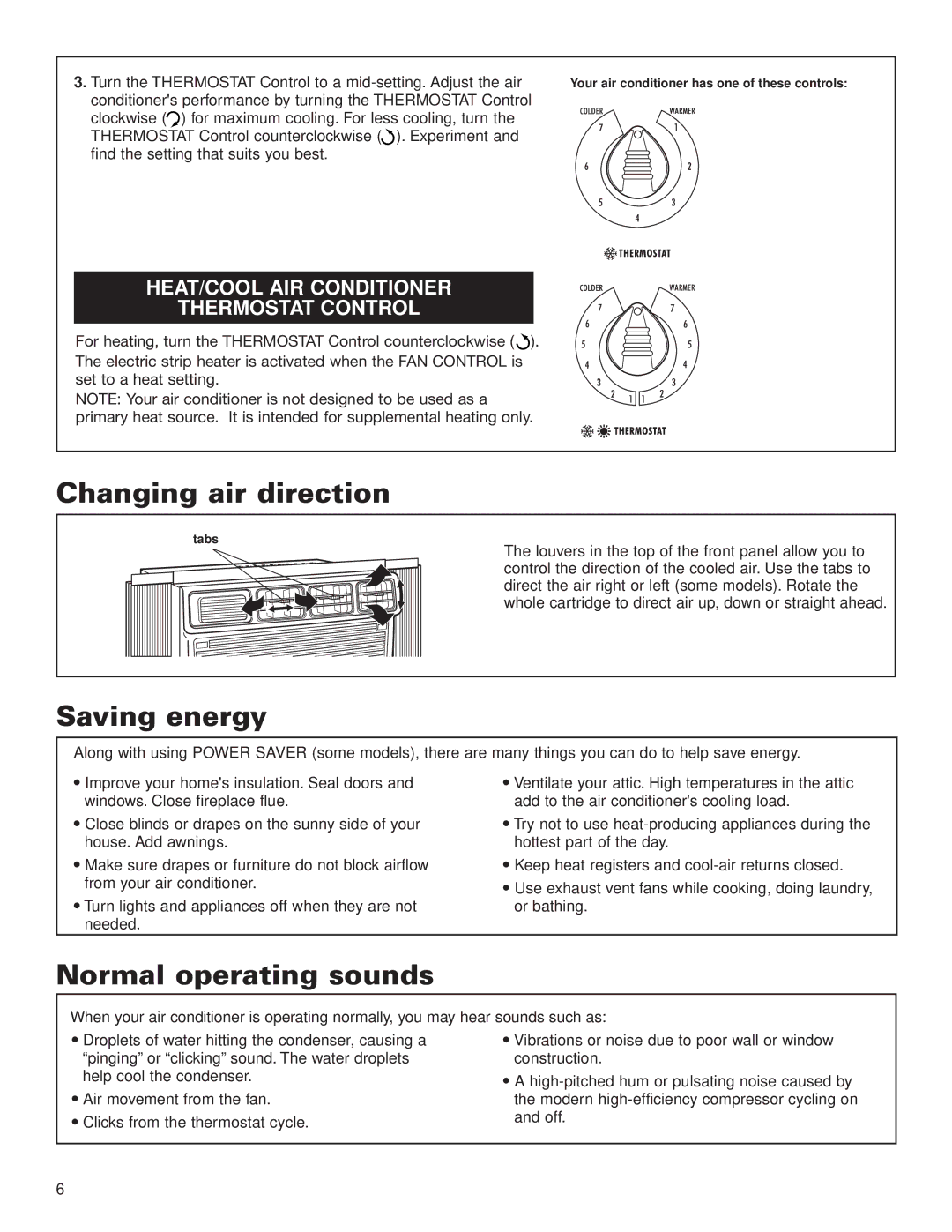
3. Turn the THERMOSTAT Control to a | Your air conditioner has one of these controls: |
conditioner's performance by turning the THERMOSTAT Control |
|
| |
clockwise ( ) for maximum cooling. For less cooling, turn the |
|
THERMOSTAT Control counterclockwise ( ). Experiment and |
|
find the setting that suits you best. |
|
HEAT/COOL AIR CONDITIONER
THERMOSTAT CONTROL
For heating, turn the THERMOSTAT Control counterclockwise (![]() ). The electric strip heater is activated when the FAN CONTROL is set to a heat setting.
). The electric strip heater is activated when the FAN CONTROL is set to a heat setting.
NOTE: Your air conditioner is not designed to be used as a primary heat source. It is intended for supplemental heating only.
Changing air direction
tabs
The louvers in the top of the front panel allow you to control the direction of the cooled air. Use the tabs to direct the air right or left (some models). Rotate the whole cartridge to direct air up, down or straight ahead.
Saving energy
Along with using POWER SAVER (some models), there are many things you can do to help save energy.
•Improve your home's insulation. Seal doors and windows. Close fireplace flue.
•Close blinds or drapes on the sunny side of your house. Add awnings.
•Make sure drapes or furniture do not block airflow from your air conditioner.
•Turn lights and appliances off when they are not needed.
•Ventilate your attic. High temperatures in the attic add to the air conditioner's cooling load.
•Try not to use
•Keep heat registers and
•Use exhaust vent fans while cooking, doing laundry, or bathing.
Normal operating sounds
When your air conditioner is operating normally, you may hear sounds such as:
•Droplets of water hitting the condenser, causing a “pinging” or “clicking” sound. The water droplets help cool the condenser.
•Air movement from the fan.
•Clicks from the thermostat cycle.
•Vibrations or noise due to poor wall or window construction.
•A
6
